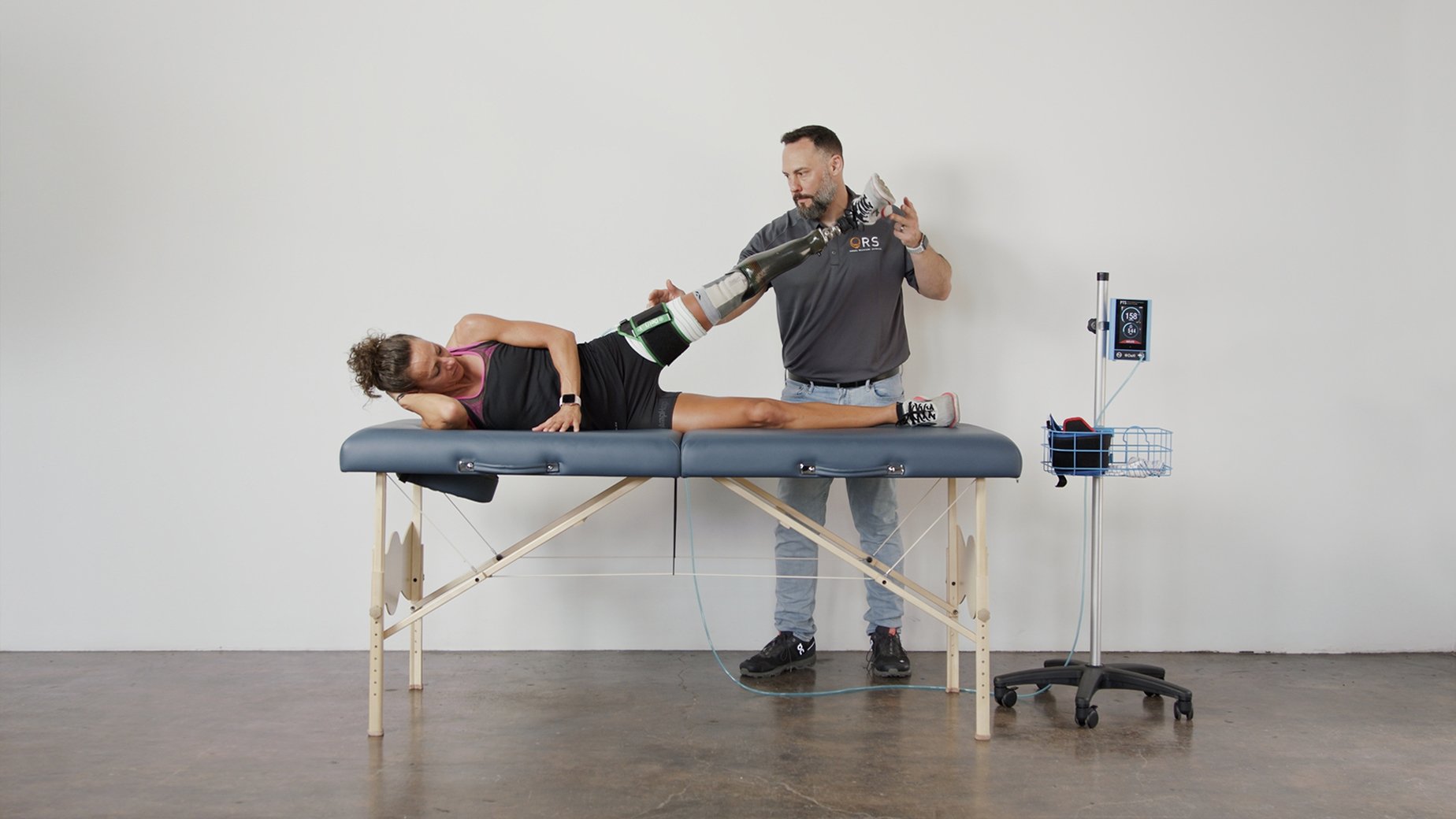Choosing a Blood Flow Restriction Cuff
Blood flow restriction training is a relatively new and innovative method of strength training that has been gaining popularity in recent years. This technique involves using bands or cuffs to restrict blood flow to the working muscle during exercise, which can lead to increased muscle growth and strength gains. However, with so many different types of devices on the market, it can be difficult to know which one is the best fit for your needs. In this blog, we'll take a look at some of the key factors to consider when choosing the best BFR cuff for your setting.
Size and Fit of BFR Cuff
The first thing to consider when choosing BFR bands is the size and fit. BFR cuffs should fit snugly on a limb without gaps at the top or bottom. They should be long enough to fully encircle the limb, while not overlapping onto itself too much. These features affect the delivery of pressure to the limb and thus affect the magnitude of pressure needed to measure limb occlusion pressure and subsequently the pressure used for the session. Some devices offer a variety of cuff sizes, others do not. The Delfi PTS for Personalized Blood Flow Restriction comes standard with three different cuff sizes so that it can be used across a broad range of limb sizes.
Quality and Durability of BFR Bands
If you truly seek the best blood flow restriction bands available then quality and durability are important factors to consider. You want to choose a BFR device that is made from durable materials that will last a long time and can withstand the rigors of regular use. Look for bands that are made from high-quality materials such as nylon or rubber and have reinforced stitching to ensure they will last for a long time. Delfi has been making tourniquet systems for use in hospital operating rooms for 40 years now. Their product has stood the test of time and that's one of many reasons we at Owens Recovery Science recommend it!
Determining Pressure for Blood Flow Restriction Training
Understanding how the device you choose to use for occlusion training determines pressure is an extremely important piece in using BFR equipment in the safest manner possible and to ensure the consistency of the method. Automated devices, hand held doppler, or manufacturer recommendations are the three most common ways that occlusion cuffs determine the pressure for treatment. Automated BFR devices like the Delfi PTS for PBFR are becoming increasingly popular as they enhance the ease of use, are free of human error and in many cases are quicker than other techniques. A good question to ask regarding automated systems is, what sort of validation has been performed on the device to ensure the pressure it provides is accurate? A hand held doppler has been found to be a valid way to measure limb occlusion pressure, but can be limited by practitioner skill, time, the need for conductance gel, and clinic noise. Finally, some manufacturers provide "recommended settings" for their products based off characteristics of the person it is to be used upon. At present, systolic blood pressure, limb circumference and cuff width are the three chief variables with scientific merit that contribute to the pressure needed to achieve full limb occlusion, and thus determine a treatment pressure.
Versatility of Blood Flow Restriction Bands
Finally, consider the versatility of the device you plan to use. Whether you will be using your cuffs for blood flow restriction rehabilitation as a physical therapist or just want to take advantage of the benefits of blood flow restriction resistance training in your own exercise routine, the best device will be the one that addresses all your needs. Some lesser known features of devices can really make the difference here. Below are some potential options you may not have considered:
- Does the cuff auto-regulate pressure during exercise?
- If the cuff auto-regulates, how responsive is that function?
- How long does it take the cuff to inflate to a target pressure?
- How long does it take to deflate?
- Can you manually choose a pressure?
- Can you adjust pressure real time if a set pressure isn't tolerated?
- Does the device store the pressure so multiple exercises can be performed within a training session?
The Best Blood Flow Restriction Device...
In conclusion, to choose the best BFR training device you need some basic knowledge of the features the leg cuffs or arm cuffs you're considering possess. Blood flow restriction therapy or training is certainly an innovative training method. However, with so many different types of BFR devices on the market, it can be difficult to know which one is the best fit for you. Making the best decision starts with considering who the device will be used on, and how do the individual features of the device help that person achieve their goals in the safest and most consistent manner possible.
If you want to learn more about implementing BFR in to a rehabilitation program, consider taking one of our courses!


